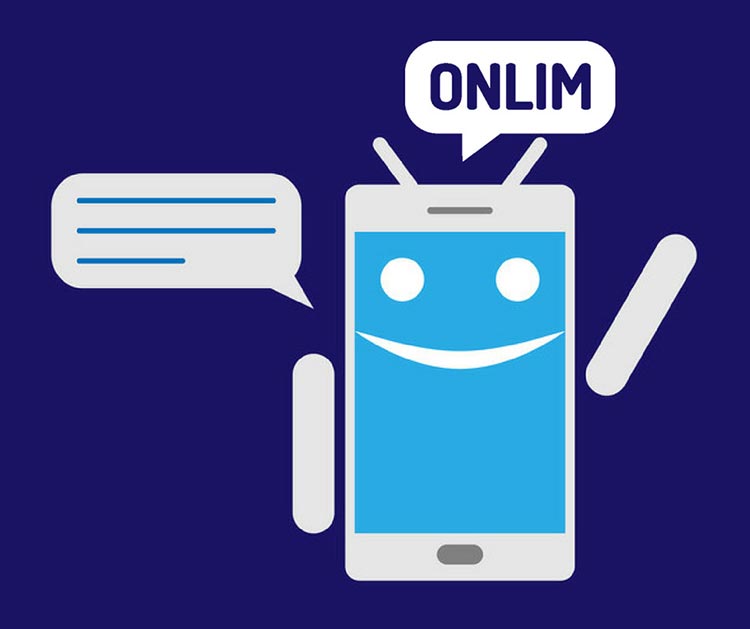How Chatbots will Enhance User Experience in 2019
Guest post by Raul Harman, Consultant and Editor in Chief at Technivorz
In one of my previous articles for Onlim, I talked about how AI supercharges the digital marketing landscape. And, one of its greatest advantages for online marketers are definitely chatbots.
Gartner predicts that, by 2020, you’ll be more likely to have a conversation with a chatbot than with your partner. Businesses are also starting to see the benefits of chatbot implementation. According to Business Insider, 80% of businesses will have invested in some form of chatbot automation. Given that, it’s not surprising that the bot market is expected to exceed $1.34 billion by 2024.
Want to learn how chatbots will enhance user experiences in 2019 and beyond? Let’s begin!
Providing Seamless Interaction with Brands
The astonishing growth of instant messaging apps like Viber, Facebook Messenger, or WhatsApp has changed the way your customers communicate. When we send a message to a friend, we’re hoping that we’ll immediately see the “Seen” notification and three dancing dots below it. In other words, we expect to get a reply immediately.
The same applies to communicating with brands. According to Statista, 31% of online consumers expect brands to answer their social media questions and complaints within 24 hours.
Real-time interactions are becoming the new minimum standard a business needs to meet in order to acquire and retain a customer. And, to do so, you need to automate your customer service using chatbots.
New, AI-powered chatbots are intelligent. Based on machine learning, they’re constantly “learning’ about your customers in order to provide them with highly relevant and accurate answers. They stay awake 24/7 to provide real-time feedback, irrespective of a user’s location or time of day.
Download our free e-book to learn everything you need to know about chatbots for your business.
Humanizing your Brand Presence
Did you know that, when interacting with a chatbot, over 63% of users don’t really understand that they’re not talking to a real person?
The reason for that phenomenon is simple – some marketers pour their hearts into building a highly interactive and engaging script that will inject their brand values and personality into their bot.
Look at the example of the Spiderman bot that was created to promote the Marvel Comics “Secret Empire” storyline.
Namely, the bot lets you choose your own adventure, meaning that you are given multiple options and you need to pick one fast. Probably the coolest thing about it is that it gives you a unique name. You’re not just another Messenger user – you become a key character in the story, someone who directly decides how the action will flow.

Here is how to humanize your chatbot:
- Do solid target audience research to create a bot that “understands” your customers and helps them solve specific problems.
- Choose the right name for your chatbot. Instead of using your brand name, give it a human name.
- Create a highly engaging narrative. This is where you should consider consulting a digital marketing company or a content developer who will know to weave your brand values into everyday conversations. Your goal is to build a bot that uses everyday language – similar to the one you use when talking to a friend. Keep your tone conversational and your messaging clear and straightforward.
- Don’t write essays. When providing answers, write two sentences max. Also, never send more than 3 messages at a time – too many notifications will make your chatbot look spammy.
- Update the script consistently. Your customers will change. Their needs will change, too. The same goes for your products and services. To provide relevant feedback, you need to stay on top of these changes. Most importantly, test the performance of your chatbot to identify potential problems and resolve them.
Delivering Relevant Customer Experiences
In today’s era of Big Data and machine learning, your customers expect you to learn more about them as individuals and provide them with the offers they really care about. According to SalesForce, 57% of online consumers would share their personally identifiable information with brands just to get more relevant deals. Moreover, most of them believe that positive experiences are far more important than the product price.
Chatbots are an important part of your marketing personalization strategy. Through natural and pleasant conversations, bots learn more about your customers – reasons why they reached out to your brand, their expectations, problems, and needs. Some brands are even taking chatbot personalization to awhole new level, by sending quizzes for their customers to take.
For example, Sephora’s Messenger bot sends a quiz to their customers to learn more about their makeup routines, skin care, and product choices. Based on their answers, it provides highly targeted product recommendations. If a customer is still not sure whether the product is right for them, they can even upload a photo and see how it looks on them.
Bringing Holistic User Experiences from One Place
Chatbots have search functionalities. Just like with search engines, your customers can use them to browse the desired products, ask questions, and even order stuff directly from the app. Most importantly, AI chatbots perfectly respond to the growing voice search trend. Apart from text-based search queries, they support voice commands, as well.
Let’s take an example of the Lyft chatbot. Users can request a rise from Lyft via their Messenger bot, Slack bot, or Amazon Echo. The chatbot will give them instant information about their driver’s location and send out the picture of the license plate and the car model to ensure a client’s security.
Why is this important? Because today’s tech-savvy customers use multiple channels, platforms, and devices to interact with brands. According to the 2017 study by Microsoft, 66% of online consumers switch between at least 3 different communication channels to connect with a customer service representative. Most importantly, they expect spotless experiences, irrespective of the platform or device they use.
Therefore, by giving them the opportunity to do their research, interact with your brand, and make orders from one place, you will minimize their frustration and enhance their overall experience with your business.
Using Chatbot Data to Improve your Services
“When customers share their story, they’re not just sharing pain points. They’re actually teaching you how to make your product, service, and business better,” Kristin Smaby, author of Being Human is Good Business, emphasizes.
That’s true. Most of your customers inform you about the issues related to your products because they expect you to keep improving them. Otherwise, they will stop buying from you.

Chatbots can be a true treasure trove of customer information. No matter if one uses chatbots to talk to a character from their favorite comic book, ask for help, or buy something, one thing remains the same – to get personalized feedback, they will need to tell your bot something about themselves. Every kind of feedback the bot collects, from the language they use to their purchasing habits, is valuable to you.
You can further use this information to improve your products/services and tailor them to your customers’ expectations. You can also create helpful blog posts, videos, and FAQ pages that educate a user and provide them with actionable tips on how to fix specific problems. Most importantly, you will be able to align your chatbot storytelling to your customers’ preferences.
Get weekly updates, tips, and tricks just like that into your inbox.
Over to You
Artificial intelligence, especially chatbots, can enhance user experiences on so many levels. They can increase your brand perception and build strong user relationships. Most importantly, they will make your marketing tactics more personalized, increase your brand trust, and generate more qualified leads.
What are Large Language Models (LLMs)?
March 18th, 2024|
What are chatbots and how do they work?
November 23rd, 2023|
The AI Act and its impact on the use of chatbots
October 27th, 2023|



